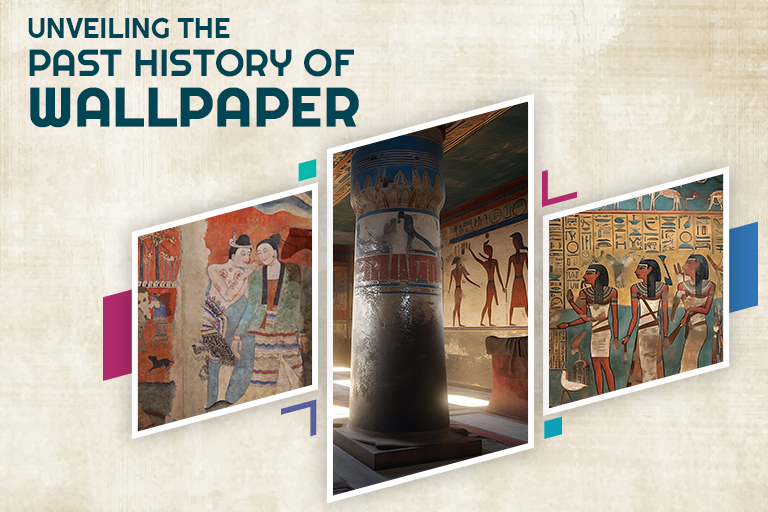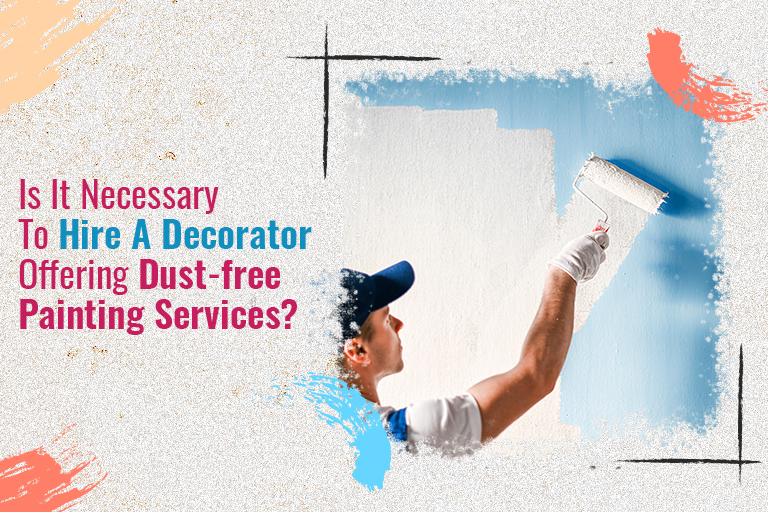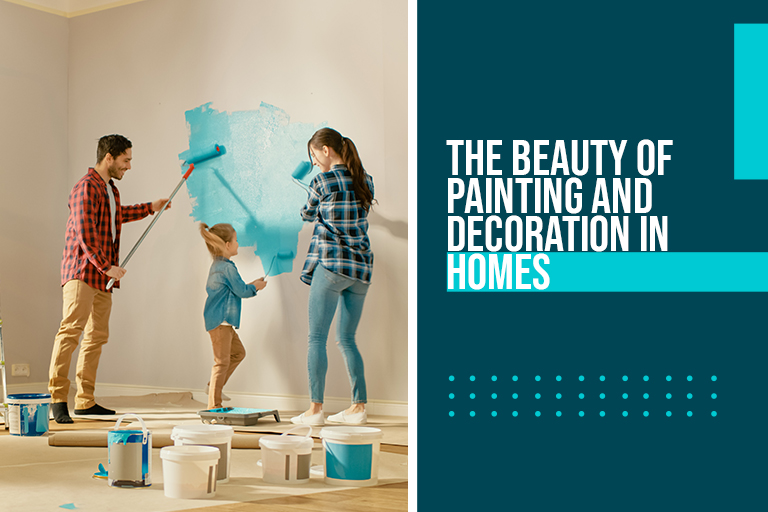
Unveiling the Past History of Wallpaper
The history of wallpaper is a captivating record of technological changes in the patterns of domestic taste. In the past, wallpapers had been used for the decoration of inside of cupboard and small rooms in merchant’s houses than grand houses of the aristocracy. But later it was used in the hallways, bedrooms, kitchens, bathrooms and reception rooms. According to painters decorators in London, this popularity led to wallpapers as decorative form of art.
Take a look at the collection of wallpapers which dates from the mid-1500s to the present day and discover its alluring design history.
How wallpaper was made
Different wallpapers included simple pictorial scenes and stylised floral motifs copied from the existing embroideries as well as other textiles. They had been printed in monochrome in black ink on small paper sheets and measured around 40 cm high by 50 cm wide. It was not before the mid-17th century the single sheets had been joined together for forming long rolls. This is a development for encouraging the production of larger repeats and introduction of block-printing. It was continued to be used in the manufacturing costly wallpapers till the mid-20th century. The design was etched onto the surface of a rectangular wooden block. The block was inked with paint and placed down on the paper for printing. Polychrome patterns need using several blocks which means one for every colour. Each colour was printed in a separate way along the length of roll which was hung up to dry before applying the next set of colour. The pitch pins present on the block corners helped printer to line up with the design. The method requires great skills and seems to be laborious. Using 15 separate shades and 30 different blocks may take up to 4 weeks in this process.
Taxing times
In the words of reliable painters and decorators in London, the technical improvements in block-printing process means by the mid 18th century, patterns could be printed in different styles and colours. The wallpaper industry in Britain flourished during that time. Due to this, it attracted the attention of Excise Office who saw in wallpaper and which is possibly a new source of revenue. These taxes inevitably encouraged manufacturers to focus on costly wallpapers and led to increased prices. Despite this, the demand remained higher and stylishly coloured patterns had been sold by the fashionable upholsterers.
The period had been inventive and rich for design. The floral patterns which had carnations and finely-coloured roses were very popular though architectural as well as landscape scenes were even admired. A paper from Doddington Hall has landscapes and framed figures interspersed with insects and flowers. The pinks and bright blues reminded us 18th-century interiors had been decorated in vivid shades. The idea of a wallpaper including pictures within the frames was inspired by the fashion for rooms. These were decorated with prints cut out and pasted directly on to the wall, called Print Rooms.
Flocks
Exterior decorators in London found the flock patterns had been copied from textiles which mimic the look of silk damasks and cut velvets. Flock wallpapers were prepared with powdered wool, which is a waste product of woollen industry. It was shaken over a fabric made with a design printed in size or varnish. The powdered wool made a rich pile and stuck those areas which were covered by the design. Earlier, flock had been applied to linen or canvas, but in the year 1634, a Huguenot refugee by the name of Jerome Lanier worked in London and followed a process with which coloured wools may be applied to the painted paper. Now, by the end of 17th century, there was the appearance of flock wallpapers. They became very fashionable and their ability to mimic textiles was customary to cover the walls with fabric due to inexpensive price. Flock papers had the benefit of preventing moths from turpentine being used in the adhesive. A good example featuring huge damask crimson flock design was hung in the Whitehall, Privy Council offices around the year 1735, and in Queen's Drawing Room in Hampton Court Palace. By the third quarter of 18th century, there was hardly country house in England which did not have at least one room decorated in a similar fashion.
Chinese wallpapers
This is more expensive form of decoration wallpapers made in China. They had first appeared in the late 17th century in London, as part of larger trade in Chinese lacquer, silk and porcelain. They quickly came to control the market for lavish wall coverings in the next hundred years. Like European wallpapers, these Chinese papers were painted and not printed as well as featured large-scale and non-repeating illustrative scenes. Every set of papers had been composed individually though the designs seem to fall into two groups. The first group portrayed the activities and occupations of Chinese life while the second group characterised a collection of birds and exotic plants. These balanced in a landscape of shrubs and trees for covering the walls of an entire room. The Chinese did not use wallpapers themselves and their products had been made exclusively for export. The accuracy and sophistication of their colours and naturalism and detail of their designs set the new standards of superiority in the manufacture of wallpapers. This had been their reputation before European manufacturers produced hand-coloured and printed imitations.
Mass-production
Till the year 1840, all wallpapers were produced by hand with block-printing process. This had been slow and labour-intensive. The manufacturers had been keen to look for ways of speeding up the production. The primary wallpaper printing device had been copyrighted by Potters & Ross. This is a cotton printing company located in Darwen, Lancashire in the year 1839. By getting accustomed with the methods used for calico printing, the paper passed over the surface of a large cylindrical drum and obtained the impression of pattern from several rollers arranged around the base. These had been concurrently inked with the colours in troughs underneath each one. The first machine-printed papers are colourless and thin besides the more complex effects of block-printing and simple geometric and floral designs having small repeats. But no-one can deny the economy and speed with which wallpaper could be prepared. The production in Britain started from almost one million rolls in the year 1834 to around nine million rolls in the 1860.
Design reform
During the mid-19th century, wallpapers included a huge range of designs such as wood-grain and marble effects, historical pastiches, imitation stucco, revivalist styles and textile patterns. The common were thousands of patterns featuring papers and floral motifs in bright colours with cabbage roses. These patterns naturalism are very appealing but it was characteristic of all which had been wrong in the Victorian design. Naturalistic patterns were not objectionable on the aesthetic grounds and seemed to be inappropriate for wall decoration. Their three-dimensionality didn’t work at all with its solid and flat surface and produced dishonest impression of the depth. There were designs with conventional ornament than the realistic motifs with heraldic and medieval ornament. This lessened flowers and foliage to a series of symmetrical and formal shapes. Despite the extensive publicity to these views, they did not take hold outside the design establishment. The manufacturers and most customers continued to prefer traditional as well as naturalistic styles.
William Morris
The conservationist, designer, socialist and writer, William Morris is popular with his wallpaper designs. He was held responsible for more than 50 patterns and his influence on this industry had been profound and long-lasting. His work denotes a compromise between the conflicting styles of 1850s and 1860s. It does not have the full-blown and three-dimensionality of mid-century cabbage rose nor geometrical severity of reformers' designs. As per a formulaic set of rules derived from historical example, the abstraction of natural forms stemmed from direct observation of curves and organic shapes. In the place of exotic blooms which were favoured by commercial manufacturers, most patterns preferred commonplace plants which became wild in the countryside and the meadows. Among his popular designs, Trellis (1864), had been inspired by the rose trellises at Red House, which was his first home. Similarly, Willow Bough (1885) was based on willow branches drawings that he made at his country home, Kelmscott Manor. The continuing impact of the works is seen in the many Arts and Crafts' imitations of his stylised natural forms but how he has changed attitudes to decoration. This encouraged a generation of the middle-class consumers who are looking for art and beauty in their homes.
Creation of pattern
The frieze-filling-dado wallpaper scheme emphasises on the popularity of wallpaper in the Victorian homes. It was first recommended in the year 1868 as a means of breaking up the monotony of a single pattern on the wall. By the year 1880, it was a standard feature in several fashionable interiors. The dado paper covering lower part of the wall, between the chair rail and skirting board, above this hung the frieze and the filling. If three different wallpapers were not sufficient decoration for any room, the scheme was generally combined with the ceiling papers to complete densely-patterned effects. The frieze should be light and lively, the filling should be retiring and all-over pattern while the dado should be darker to withstand wear and tear and dirt. Co-ordinating papers, which were printed in art yellows, golds, greens and reds, can be really attractive though the combination of frieze-filling-dado-ceiling had led to the visual overload. The treatment had been completely suited to the stairs and the hallways. By the year 1900, ceiling papers had disappeared and the wide friezes, like the Peacock pattern and artistic interiors were hung above the plain or panelled walls.
Nursery wallpapers
With the expansion of the market for wallpaper, there were increasingly specialised products designed for specific rooms and functions. Victorian children had been thought to be sensitive to their surroundings and by the last quarter of the 19th century, many manufacturers were producing nursery papers which aimed in improving influential young minds. The illustrator and artist, Walter Crane, who had been a creative designer of wallpapers, was a master of this genre. His Sleeping Beauty paper in the year 1879 illustrated the qualities of beauty and moral instruction needed. The precisely drawn and slumbering figures entangled in a rose had been artistic though the subject was suited to encourage children to sleep. The wallpaper was practical and oil-based pigments meant it could be washed or sponged without damaging the colours. Arsenic had been broadly used in producing fabrics, paints and wallpapers since the year 1800s. By 1870s, it was thought the vapour given off by those damp wallpapers could be the reason for illness and death. Children and sick people had been extremely vulnerable. Growing public anxiety about the dangers of wallpapers led the manufacturers to make products that had been free of toxic substances. Sleeping Beauty was included in the range produced by Jeffrey & Co. in the mid-1880s, which entitled Patent Hygienic Wallpapers. These were advertised as arsenic-free and washable.
From jazz to pop
The 1920s and 1930s were the boom years for wallpaper industry in Britain. The production had increased from 50 million rolls in 1900 to almost 100 million rolls in 1939, with most activities concentrating at the inexpensive end of the market. Though traditional stylised flower and leaf patterns had continued to be extensive, patterns influenced with popular culture and modern art appeared. The zig-zag, brightly-coloured and jazz designs with Cubist-style motifs are in design-conscious houses while Oriental subjects are very popular with customers looking for novelty. Arabian themes had been inspired by the success of films in 1922 and Chinese patterns seemed to be indebted to books. The discovery of Tutankhamen's tomb in the year 1922 led to short craze for the Egyptian motifs. The office painters and decorators in London found the decorative panels and cut-out borders which featured floral or geometric patterns had been combined with plain, semi-plain or lightly embossed backgrounds. The Good Design movement of the 1950s had favoured less fussy effects. It supported the use of linear patterns, abstract geometric motifs and flats to see them being replaced by bright colour and hallucinogenic Pop designs in 1960s. New products and processes had overlapped the growth of do-it-yourself (DIY). In the year 1961, the first ready-pasted papers and pre-trimmed appeared which was then followed by metallic finishes, laminated papers and scrubbable vinyl wallpapers.
Wallpaper now
The year 1960s and 1970s signifies a high point for wallpaper manufacturers when sales had been strong and designs were modern. The oil crisis of the year 1973 had caused considerable reduction in the industry size world-wide. Several companies were going out of the business or taken over by the big international organisations. Huge competition from paint sector and popularity of finish such as rag-rolling and stippling in the 1980s had lead to sales reduction. The only areas of growth were in the mass-produced and cheaper goods sold in the DIY superstores. But wallpaper had undergone a renewal in its fortunes. There was fashion for feature walls which encouraged more assertive patterns and the development of digital printing as well as screen-printing has enabled designers and artists to remain involved. Some artists prepared limited edition and customised papers that seem to be much more like the installations than wallpapers. Few firms changed the traditional rural scenes in the dark images of modern life.
Thus, the association of bigger names from the fashion industry helped to make wallpaper necessary background for the lifestyle of the present world. Contact professionals at London decorating company to get different kinds of wallpapers and choose the best one for your need.





